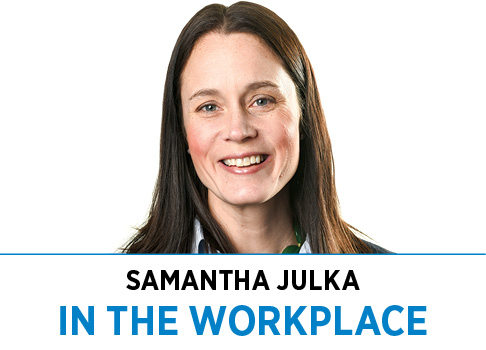Subscriber Benefit
As a subscriber you can listen to articles at work, in the car, or while you work out. Subscribe Now Poopy pants.
Poopy pants.
You smiled when you read that, right? Potty humor—everyone secretly loves it, especially 3-year-olds, moreover my 3-year-old. I can be explaining my perspective on a presidential candidate’s stance on foreign trade policy or even simply why it’s important to eat your broccoli, and my 3-year-old just comes back at me with the word (he makes it one word) “Poopypants,” and I do everything I can to not laugh.
Let’s face it; it’s funny and probably applies to both aforementioned topics.
Butt (See what I did there?), sometimes potties are no laughing matter, particularly when it’s a potty that is the joke.
It’s pretty interesting how often restrooms come up in our research projects about workspaces, even though they are generally not an area within the office for which we actively seek data.
For example, we don’t measure how many people are in restrooms or out of them in our quantitative data collection. However, that doesn’t keep employees from bringing them up when we collect qualitative data through interviews: There are not enough of them. They’re in the wrong place. They’re just plain dirty.
In a recent research project, we heard several times that this office didn’t have enough bathrooms. It seemed weird to us, considering this company’s building was relatively new and absolutely up to code when it came to bathroom requirements. What we learned was that, in their meeting-heavy culture, crowds of people were all getting out of meetings around the same time each hour with only a few minutes to get to the next meeting. When employees made it to the bathroom, it was like intermission at the Murat—without the wonderful bathroom attendant.
Another group we worked with complained about how dirty the bathrooms were. We hesitated to probe deeper on this one. But when we did, we learned employees at this particular office didn’t have access to a break room or even a sink; therefore, they were washing out food containers in the bathroom. That led to left-behind food residue and even some unwanted critters. We realized the problem wasn’t the bathroom itself, or even the cleaning crew; it was the lack of a break room.
And, finally, an anecdote that weighs heavily but has a happy ending. When working with a manufacturing group, we had factory employees tell us they sometimes had “accidents” at work because they didn’t have enough time during breaks to walk all the way to a distant bathroom.
When we reported this finding to their leadership team, I think I saw a few tears. The great news is, those leaders listened. Now, those same employees not only have closer bathrooms, but those facilities look and feel like a five-star resort spa.
All of this is to say: Why aren’t bathrooms more of a focus in our workplace research?
For some reason, it’s the one place inside the office that hasn’t caught up with the rest. Beige walls and fluorescent lights might have been phased out of most workplaces, but they’re still standard for the bathrooms. And if you think about your bathroom at home, in restaurants or even the Murat, they’ve become part of the overall experience.
So, while our HR friends might not encourage potty jokes at work, they could certainly stand to make sure their potty is no joke if they care about their ability to attract and retain top talent.•
__________
Julka is founder of Indianapolis-based DORIS Research, which uses design thinking to organize workspaces.
Please enable JavaScript to view this content.
